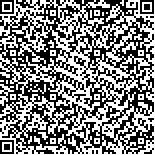| 摘要: |
|
| 关键词: 罗氏沼虾幼体 生长 能量收支 光周期 |
| DOI: |
| 分类号: |
| 基金项目:国务院侨办重点学科科研基金资助项目,93-93-18号 |
|
| INFLUENCE OF PHOTOPERIODS ON GROWTH AND ENERGY BUDGET OF MACROBRACHIUM ROSENBERGII LARVAE |
|
LIN Xiao-tao,QI Sang,CAO Shuang-jun,HUANG Chang-jiang
|
|
Institute of Hydrobiology, Jinan Universitr Guangrkou, 510632
|
| Abstract: |
| Experiments were carried out in the laboratory to examine the effects of photoperiods on the growth and energy budget of the larvae of Macrobrachium rosenbergii (De Man) from February to May, 1995. Four experimental groups were estimated under four L:D photoperiods: 4:20, 8:l6, 12:12 and 24:0. For each group, the ?rst zoael larvae were reared in three glass containers, each containing 800 individuals in 10L of ?ltered seawater, and fed on Artemia nauplii at a density of 5 ind/ml until the larvae reached a postlarval stage. Water temperature was maintained at 28±1°C, salinity at 15, light intensity at 1500 lx throughout the experimental period. The larval growth rate was calculated by increasing in body dry weight and rearing duration. Energy for growth (G) and energy intake (F) were calculated from the measured data on dry weight and carbon content of larvae and the amount of food consumed. Energy for metabolic costs (R) was calculated from the measured data on respiration rates. Energy of the exuvia (Ev) was calculated from the exuvia dry weight and the energy for rejection (E, egestion plus excretion) was calculated from the energy budget Differences among experimental data in each group were compared by analysis of variance. The results are described below.
The specific growth rate (g) increased with increasing light period (T), with a relationship between those two parameters of g= 6.5245 + 3.6045 lnT Under all the four photoperiods, larval growth can be expressed by a formula DW=aebt, in which DW represents the body dry weight of the larvae, t the number of days for the larvae rearing, and the index b indicates the speed of growth. There were no signi?cant differences in carbon and nitrogen contents of larvae reared for different photoperiods. No matter how the body weight of larvae, their respiration rate (r') always remarkably increased after feeding, but decreased with an increase in the body weight both before and after feeding. The parameters of r' and DW showed a remarkable negative relationship i.e. log r'=0.6017-0.1692 log DW before feeding and log r'=0.7111 - 0.1649 log DW after feeding. The dry weight of exuvia (EDW) occupied about 2.3% - 2.6% of larval body dry weight, with a regressive relationship of EDW=-0.4252 + 0.0268 DW. The allocation of food energy showed no remarkable differences among the three groups of the larvae reared under L:D=8:16, 12:12 and 24:0 photoperiods, but had an increase of 9.5% allocated to growth and a decrease of 7.7% lost to rejection in these groups if compared to those reared under the L:D =4:20 photoperiod. The energy budget for total development of larvae were l00F=20.73G + 40.14R + l.53Ev + 37.60E for the L:D= 4:20 group and 100F=30.18G + 38.13R + 1.80Ev + 29.88E for the average of the rest of the groups.
Results of the present study indicate that long period of daytime, especially under a continuous light exposure condition, may increase the growth rate, gross growth ef?ciency and assimilation efficiency of the larvae. Prolonging light exposure is considered to be an effective measure for increasing the production in the mass larval culture. |
| Key words: Macrobrachium rosenbergii larvae, Growth, Energy budget, Photoperiod |
